 The suffix “-punk” gets hung off an increasing number of genres these days. Doing this carries with it a set of expectations about what will be involved, with some attempts making more sense than others. In this article, I’m going to survey some of my favourite kinds of –punk, and what they have in common. Including the disturbing truth about most of them…
The suffix “-punk” gets hung off an increasing number of genres these days. Doing this carries with it a set of expectations about what will be involved, with some attempts making more sense than others. In this article, I’m going to survey some of my favourite kinds of –punk, and what they have in common. Including the disturbing truth about most of them…
Cyberpunk:
It’s hard to pin down exactly when the different –punk movements started and besides, attempting to do so would probably go against the central ethos of the genre. In any case, this is the first one I encountered. Cyberpunk as a genre is characterised by high-tech and low-life. Computer technology and cybernetics tend to be very advanced, with computer networks dominating every aspect of life, but the structures that hold society together are collapsing. Its protagonists are the urbanised misfits; manipulated and seldom benefiting much from their experiences. The settings are dark and troubled, illuminated by harsh neon through the mists of rain and corporate power.
Arguably William Gibson is the progenitor of the genre with his novels Neuromancer, Count Zero, and Mona Lisa Overdrive, although I don’t think he ever actually used the term. But there is plenty of company at the top of this dystopian futuristic pedestal: Bruce Sterling, Pat Cadigan, and Bruce Bethke are also names worth looking for if you feel like testing the waters. And of course if you want to see it on screen it’s hard to go past the Blade Runner movie or the Deus Ex series of computer games. System Shock 2 is also an excellent PC game example, although showing its age by now.
These days cyberpunk is less well-known than it used to be. The ever-expanding maw of what is often inaccurately labelled “science-fiction” has all but swallowed it, and I suspect a lot of people regard it as part of a continuum rather than something that stands apart from its peers. This does it a disservice; cyberpunk as a genre may look strange to eyes that are jaded by modern styles, but I think it still has something of value for us. Ghosts are nothing if not capricious.
Steampunk:
Steampunk is another term which suffers from being bandied about with increasing enthusiasm and decreasing accuracy as time goes by. I’ve seen it used to refer to anything from top hats to transistor radios, which just goes to show that we desperately need commentators with a larger vocabulary. In its fundamentals, however, I think it refers to an aesthetic which draws heavily from the latter part of the 19th century. The trappings of Victorian Britain and the American Wild West still resonate strongly for some people, and allow for a variety of colourful characters to inhabit them. It was also an era in which a skilled individual could – and often did – make a prodigious impact on the world, which adds a necessary element of plausibility to the fantasies it allows.
My introduction to the genre came with The Difference Engine by William Gibson and Bruce Sterling, although there is no shortage of other suitable work floating about in the aether: The Warlord of the Air (Michael Moorcock) and A Transatlantic Tunnel, Hurrah! (Harry Harrison) are also good examples. For some reason good screen specimens are a bit harder to come up with. There was a somewhat-average Will Smith movie (Wild Wild West), and a couple of recent computer games (Dishonored and Bioshock Infinite), but the pickings seem to be somewhat slimmer here.
I’m not going to try to talk about steampunk’s impact or acceptance, I don’t know enough and there are plenty of more knowledgeable commentators than I on the subject. The most I can say on the subject is that there’s a reason people are trying to apply the word broadly – they’ve heard of it, and they think it’s appropriate. That seems like pretty compelling evidence that it has thoroughly entered our cultural weltanschaung, and I expect it will continue in popularity. Many great things have been accomplished by the careful combination of keen minds and ardent spirits.
Dieselpunk:
Steampunk is bounded by the end of the Victorian period – by then the inescapable mechanisation of the world is well underway, and there’s less room for the gaslight romance of an earlier era. But where steam powers fantasies of the 19th century, internal combustion takes its place to drive forward an alternative aesthetic of the 20th. Dieselpunk spans the period between roughly 1920 and 1950, a time shaped and profoundly influenced by the two world wars and the uneasy pause between them. To an extent it overlaps with the two-fisted tales of pulp adventure that come from those years, but it is also influenced by the urban and wartime history that precedes and follows them. The key to it all is vastness – the world is bigger but so is our ability to explore it, as well as the cities and buildings and machinery that we live in the midst of. This sense of scale carries with it its own effects on the characters in the stories.
If you’re looking for examples, you’re probably best served by firing up your computing platform of choice. There are plenty of movies which showcase the aesthetic, starting with the first three Indiana Jones films, Sky Captain and the World of Tomorrow, and the entirely-historically-accurate Inglourious Basterds (a film which accomplished a feat I had thought impossible by making me feel sympathy for Nazis). If gaming is more your thing, then I strongly recommend Bioshock, a spiritual successor to System Shock 2. Return to Castle Wolfenstein and Command & Conquer: Red Alert should also scratch the itch nicely.
Dieselpunk is not well known. Most people seem to confuse it with a kind of steampunk, which does both subgenres a disservice, and it also suffers from its surface resemblance to the trashy adventure fiction containing manly men, weak women, and moustache-twirling villains. When done badly, it can descend to that level. But when done well it captures both the unease and determination of “the Greatest Generation”, who were not afraid to stake themselves against huge obstacles both on and off the battlefield. Sometimes you have to be brave enough to look through the lens of a different era’s telescope.
Atompunk:
Where dieselpunk ends, atompunk begins. Sometimes called rocketpunk, it inhabits the years between 1945 and 1965 – after atomic power has entered the scene, but before transistors started making everything we thought we knew about technology increasingly obsolete. It often has an almost blind faith in the power of science and technology to build us a bridge to the future, but simply looking at the space race and the growing embrace of nuclear energy doesn’t give a fully accurate picture. This was also a time when communism and paranoia about it were shaping societies. Everest was conquered and so was polio… but the ongoing British retreat from empire set Africa and the Middle East aflame, to say nothing of what was happening in Southeast Asia. It was almost as if there were two worlds inhabiting the same space – one clean and powerful, harnessing massive energies to shape the destiny of the entire planet. The other dirty, sweaty, and tired; forever struggling with the careless havoc wrought on it by the earth-shaking changes that occurred. Everything was changing faster than it ever had before, and maybe faster than it ever would again.
A lot of the early Robert A. Heinlein novels, especially those for younger audiences, fit into this category. In a weird sort of way so does The Dogs of War, by Frederick Forsyth. Although the technology doesn’t take a central role in the story, the struggles of the people in it would resonate strongly with the aesthetic of the subgenre (although at the time it was a thriller and arguably still is, so don’t read it expecting a subtle and thoughtful discussion of… well, anything really). But the cornerstone of the genre would be the Fallout computer game series. Lots of fins, lots of chrome, an atomic war between the US and Communist China.
Atompunk – or rocketpunk, depending on which aspect you’re looking at – does a good job of showing us what the future used to be like. On the one hand the industrialisation of science was making possibilities appear almost limitless; on the other the essential human element could bring it all to naught due to the struggles inside our heads. War… war never changes.
At The Core:
If you’ve been reading along with me then you’ve probably got a fair idea of what all these subgenres have in common. All of them rely on a single technological area which has been developed far in advance of others, possibly anachronistically far. The tensions between the alienating and empowering effects of this technology and the people involved in them are the primary driving forces for how society is shaped and developed in the setting. The urbanised and artificial landscapes created by it are an additional major factor. The aesthetic created by all this can often tend towards the used future sort of feeling, even in works which are really a kind of alternate history.
They also share a sort of retrofuturism, in that they are all a vision of how a future could have developed from a point of divergence; a form of zeerust. Yes, even cyberpunk… and it’s a hell of a commentary on our world when what was intended to be totalitarian dystopia actually doesn’t sound too bad in some ways compared to where we appear to be heading. Exactly why these dated views of potential futures should have so much appeal is something I can’t answer here, and in any case it probably varies depending on who you ask. But looking at the past and wondering “What if..?” does scratch an intellectual itch for a lot of people. And besides, it lets those of us with a social sciences degree feel all important and knowledgeable and useful, which is nice.
But these forms of –punk share something else too, though. And it might shock you.
Are you ready?
Most of them aren’t really punk at all. All of them took the –punk part of their name from cyberpunk, but in a lot of cases they didn’t follow through on what it meant. See, early cyberpunk very deliberately adopted the punk aesthetic: its characters were anti-authoritarian and non-conformist, with a tendency to take matters into their own hands in all manner of ways. This was a hardboiled and gritty view that contrasted very strongly with the utopianism that had existed in previous views of the future. This future might have been dangerous and troubled, but it never shied away from depicting the consequences of the technology that shaped it. That sort of frustrated idealism was one of the things that made it compelling. However, it’s not an ethos that has been continued as time went by. A lot of the works that are considered modern cyberpunk do bear some resemblance, but present a much less disturbed future. They’re verging on being ‘cyberpreppy’ instead; and this same untroubled – almost carefree – outlook has affected all of the subgenres to a lesser or greater degree.
Gluing cogs and brass buttons to something does not make it steampunk. Wearing an aviator helmet and a khaki field jacket is not enough to be a dieselpunk. And no matter how many fins and chromed buttons your car possesses, it is not atompunk.
Cyberpunk is the neon glow of the Fission Authority building on the clouds above Night City, illuminating the littered streets where a dead man lives in a box and sells advice to illiterate gangers, who pay with military-grade choline enhancers.
Steampunk is a political courtesan with tangled hair and a set of punch-cards, daughter of a disgraced Luddite, caught up in the shadowy struggle between the Industrial Radicals who rule Britain and those trapped in the soot-stained tenements.
Dieselpunk is escaping a crashed aircraft in the mid-Atlantic and taking a malfunctioning bathysphere to a failing underwater city, created by a frustrated industrialist, and populated by the crazed survivors of his social experiment.
Atompunk is the first lady astronaut meeting her doctor on Mars, who used to live with a family in Kansas… until a nuclear-fueled rocket fell out of the sky one day and turned her into an orphan.
Let’s get punked.
Question of the post: Is there a kind of punk that you like? What do you find appealing about it? Does the lack of punk in any of them strike you as a problem?

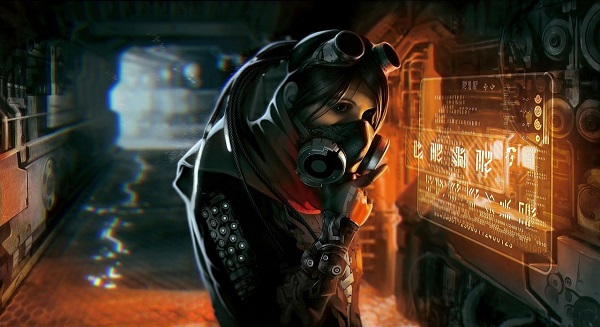

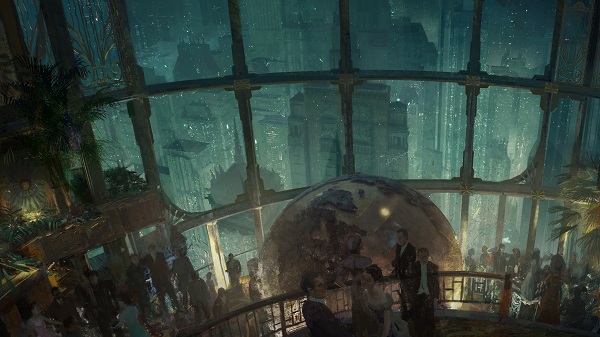
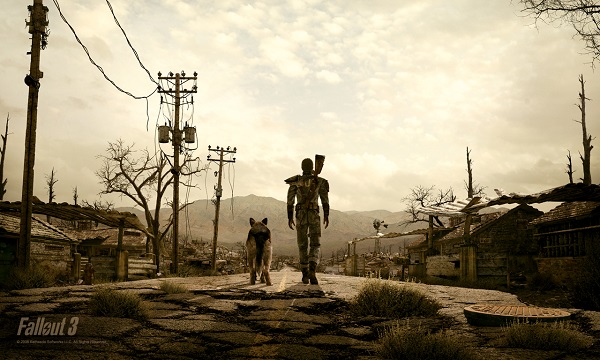
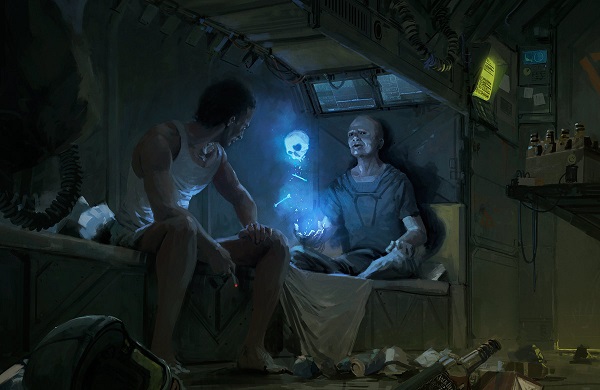
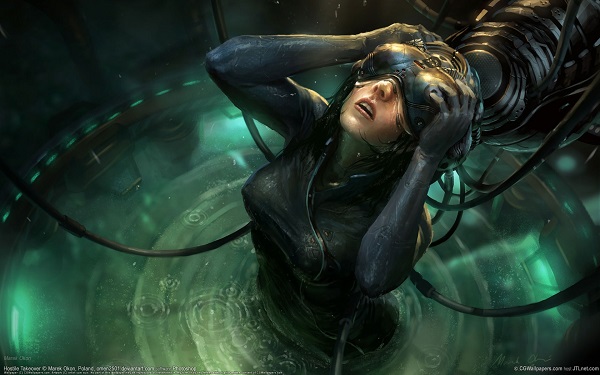
Eh, it was cool for a bit but nowadays it’s kinda old news. Now it’s all about the robot/drone wars and the future of the iphone.
Don’t get me wrong I liked it for game and book settings but once it’s everywhere I noticed it was too much.
LikeLike
If you’re talking about the Cyberpunk tabletop RPG then yes, it did have a bit of an identity crisis once the 80s were over. I like a lot of things that it did, but other (later) games did them better in my opinion. The cyberpunk setting as a whole has still had a long-lasting influence when I’m gaming, though, so I think it still has legs if it’s used with a bit of care.
LikeLike
Enjoyed your post and I think that you make some very good points. Yeah, cyberpunk degenerated into “cyberpreppy”. I think most of the others you mention in their modern form mostly deserve the suffice “opera” as in Spaceopera. So we get Steamopera etc. Uses the trappings of the original but lacking the heart and original intent.
Punk has become a suffix like “-Gate” is for political scandals. Blatantly misused from the original meaning. Hacker is another word that has been coopted into a meaning (someone who breaks into a computer system) that was not how it was originally used by programers (someone who can quickly write a piece of code to get a job done normally for a one-of task). “Punk”, which I assume originally came from Punkrock, was intended to have an anti establishment/nihilist meaning. Certainly dystopian in nature. From that original definition Cyberpunk fit with that meaning. The others mostly strip off that meaning and attach one that just means creating a pastiche of a past times understanding of science and technology.
Now Steampunk I would define that way as a modern take on a Jules Verne/HG Wells story that they might have written. The Frank Reed Jr. stories are another take on the Victorian era idea of science fiction. I would argue that Heinlein was not writing Atompunk, because he was writing based on the scientific knowledge of the time. Now if I wrote a story using the same themes and assuming the science of the time, I might call that Atom/rocketpunk. Again, it’s a definitional thing. The movie The Rocketteer I think does fall into the realm of Dieselpunk for example. So maybe as the stories age and become less consistent with know science and technology the fall into those categories.
If your interested in what I consider a fun Steampunk web comic (though the artist Phil Foglio calls it a Gaslamp Fantasy), I would suggest Girl Genius. Takes a bit to get going but it’s a fun ride not only from the comedy but the wild inventions and personalities he comes up with. Everything from Robots (Clanks), Mad Scientists(Sparks/madboys), Frankenstein Creatures(Constructs) and so on. Foglio did the covers for the “Myth Adventures” novels if your familiar with them.
LikeLiked by 2 people
I really like your idea about appending “-opera” to things instead of punk, it seems much more accurate. I’m not being dismissive of -opera type works either, my own writing in science fiction tends towards space opera (because it is really REALLY hard to include the things I want with a rigid adherence to science as we know it, and also because I’m more interested in the characters than their toys). Good point about the definitions too. Science fiction used to be known as “scientific romance”, and to be honest I rather like that term for it.
And yes, I’m aware of Girl Genius. I think calling it “steampunk” is stretching the definition so far that it is in danger of meeting itself coming from the other direction, but the Foglio’s term “Gaslamp Fantasy” seems highly appropriate. It has some characters that I really enjoy. Dost thou even lift?
LikeLiked by 1 person
I second the idea to attach -opera to the renditions of most of the current -punk trends, but if I was going to pick one, I think I might pick dieselpunk. I think that time period just had a lot more going on, a lot more subtleties to play around with, and you don’t have to be entirely confined by “steam tech”. (On a slightly unrelated note, there was an anthology call out last year for non-European, non-steam steampunk, which was a cool idea [multiculturalism, yay!], but made me chuckle for its wording.)
LikeLiked by 1 person
Yes, I really like dieselpunk too. That era has so much potential – it was still entirely plausible to run across uncharted islands or be surprised by some development in technology (or in what the street did with it, for that matter). From a writing perspective, the technology was high enough to allow conveniently fast travel and communication, but fragile enough for it to be interrupted for any reason or none at all. And as you say, there are just so many subtleties to play around with and explore.
Non-steam steampunk? Let’s just call it ahistorical fiction and leave it at that, shall we? Sometimes I wonder if steamopera has become a victim of its own success.
LikeLiked by 1 person